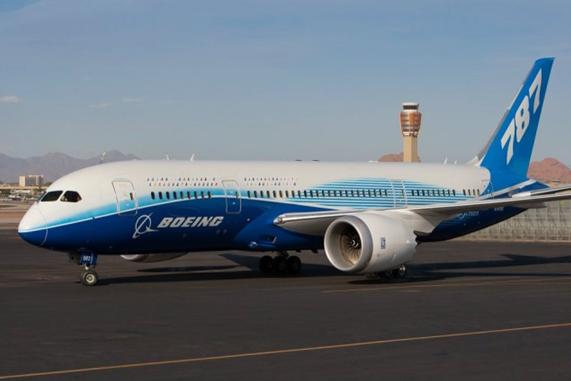[captionpix imgsrc=”https://pvnn.org/wp-content/uploads/2015/10/corpwel.jpg” captiontext=”Photo courtesy of cheatsheat.com“]
As the United States government looks to ways to cut back on unnecessary spending and bring in more revenue in order to gain control of its finances, many politicians look to cutting military spending and social programs for the poor and elderly. Although it may prove necessary to cut money from these institutions, it would be pragmatic to start looking for revenue by ending Corporate Welfare.
The American government, through tax breaks or direct payments, subsidizes many large corporations. This is done for a variety of reasons, including the desire to stimulate young industries like clean energy. The subsidies allow companies to compete effectively in an increasingly global economy. Intense lobbying on behalf of large companies is another important factor in determining where corporate handouts are distributed. Corporate Welfare costs the United States around $100 billion every year, money that could be used to help balance the budget or pay for infrastructure. Boeing, a company that manufactures and designs airplanes, receives $13 billion in government handouts and tax breaks, the most of any American company. Intel, Ford, and General Motors are not far behind, with each receiving around two to four billion dollars in handouts.[ref] Sam Becker, “The 8 Biggest Corporate Welfare Recipients in America,” The Cheat Sheet, May 7, 2015, accessed Oct. 17, 2015.[/ref] The vendetta is how to end corporate handouts to established businesses while allowing short-term public investments into new industries that will benefit the American people.
The first example of Corporate Welfare occurred in the 1790s, when Treasury Secretary Alexander Hamilton subsidized young corporations to support the growth of American industry. [ref]Thomas DiLorenzo, “The Founding Father of Crony Capitalism,” Mises Institute, Oct. 21, 2008, accessed Oct. 17, 2015.[/ref] Seventy years later, Abraham Lincoln made “internal improvements” a central aspect of his agenda. These improvements included discriminatory taxation that protected northern industry and Corporate Welfare. This, in combination with massive spending on the Civil War, led to the enormous industrial economy that emerged in the United States during the Gilded Age. Corporate Welfare has become a permanent fixture of the American economy since the New Deal. Roosevelt created farm subsidies, which are rewarded based on the type of crop grown and the quantity grown. As a result, large agricultural companies receive virtually all of the handouts, instead of smaller farming operations.[ref]Brian Riedl, “How Farm Subsidies Became America’s Largest Corporate Welfare Program,” The Heritage Foundation, Feb. 25, 2002, accessed Oct. 17, 2015.[/ref] After World War II, most corporations that were subsidized by the government used this extra money to invest in their workers and lower prices for consumers. This changed in the 1970s, when companies prioritized cost cutting and pumping up stock prices.[ref]”Bernie Sanders on Corporate Regulation,” FeelTheBernorg, accessed Oct. 17, 2015.[/ref] The result is that Corporate Welfare is no longer used to create jobs or increase employee salaries. Instead, it has become an expensive parasite that is fed by the American taxpayers.
One person who opposes Corporate Welfare is former Labor Secretary Robert Reich, who argued, “Corporations aren’t people, despite what the Supreme Court says, and they don’t need or deserve handouts… There’s no reason any corporations should be on the dole, or that your hard-earned dollars should be going to them for no reason but their political clout.”[ref]Robert Reich, “Robertreich,” Robert Reich (#6. END CORPORATE WELFARE Corporations Aren’t…). 26 May 2015, accessed Oct. 17, 2015.[/ref] Companies operate in the private sector, and their success is determined by numerous factors, including quality, demand for the product, and the effectiveness of their leadership. It is not fair that certain large companies do not have to compete on a level playing field because the government wants to insure their success against foreign or new businesses. Even Charles Koch, a political adversary of Secretary Reich, advocated, “eliminating welfare for the wealthy.”[ref]Maev Reston, “Koch Calls for Unity against ‘corporate Welfare,’” CNN. Aug. 2, 2015, accessed Oct. 17, 2015.[/ref] That the largest donor to the Republican Party is in favor of ending Corporate Welfare is a sign that this objective could secure bi-partisan support.
Not everyone thinks Corporate Welfare is a problem. Conservative blogger Andrew Sullivan argued, “Corporate welfare isn’t necessarily a bad thing. Some of these giveaways arguably do a lot of good. Companies that benefit from these policies are just as dependent on the government as the guy who gets the earned-income tax credit.”[ref]Andrew Sullivan, “Corporations Are Welfare Queens Too,” The Dish, Oct. 5, 2012, accessed Oct. 17, 2015.[/ref] Limited government subsidies can help the economy as a whole. Public investments in clean energy could lead to new jobs and slow the effects of climate change. The government bailouts of the banks, Wall Street and General Motors during the Great Recession are examples of Corporate Welfare rescuing the economy from greater devastation. A policy to deal with this issue would roll back the vast majority of handouts to corporate entities, while allowing short-term public investments into young industries, like clean energy, and bailouts for key industries when needed. However, these loans must be paid back, and the government should take steps so that institutions that are too big to fail are monitored appropriately.
Take Action:
Sign this petition to end Corporate Welfare.



